Ovi-bovi cow monitoring system
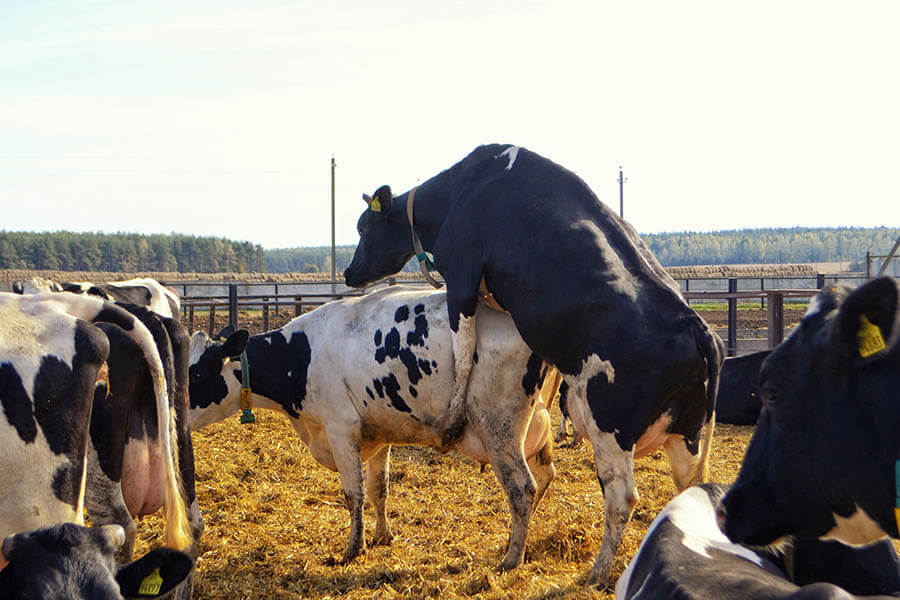
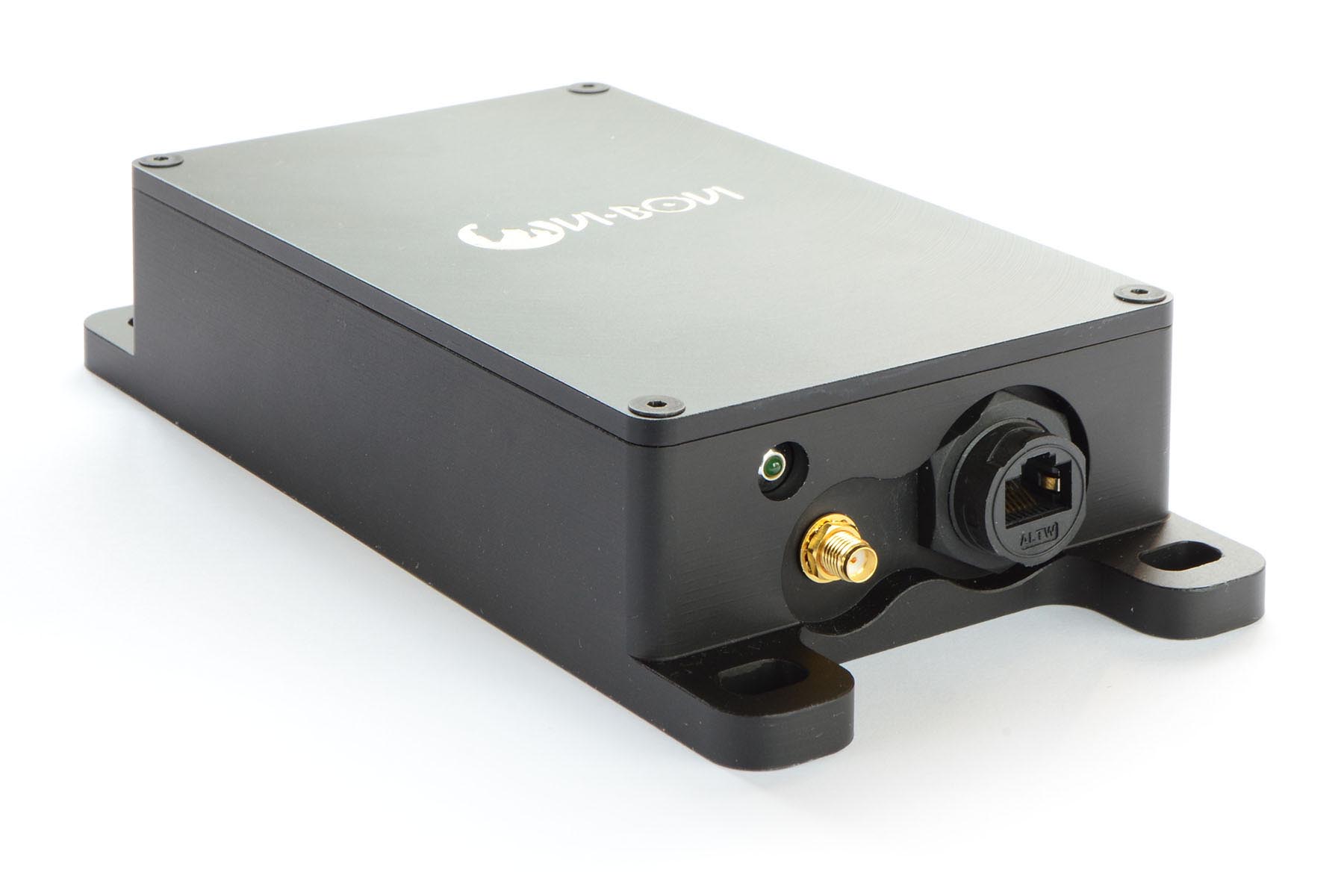
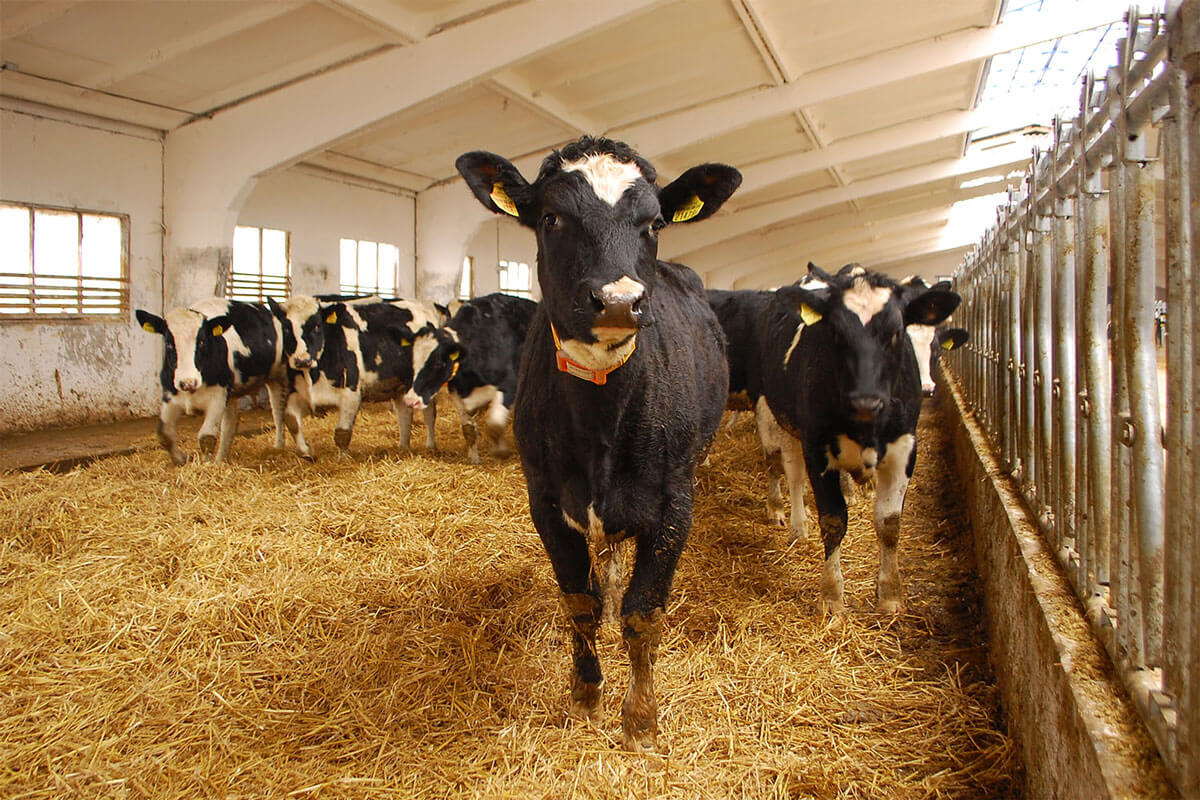
- individual collar-worn activity tags for cows;
- receiver supporting 2 to 5 km wireless range;
- software for cow-related data processing and in-browser visualization.
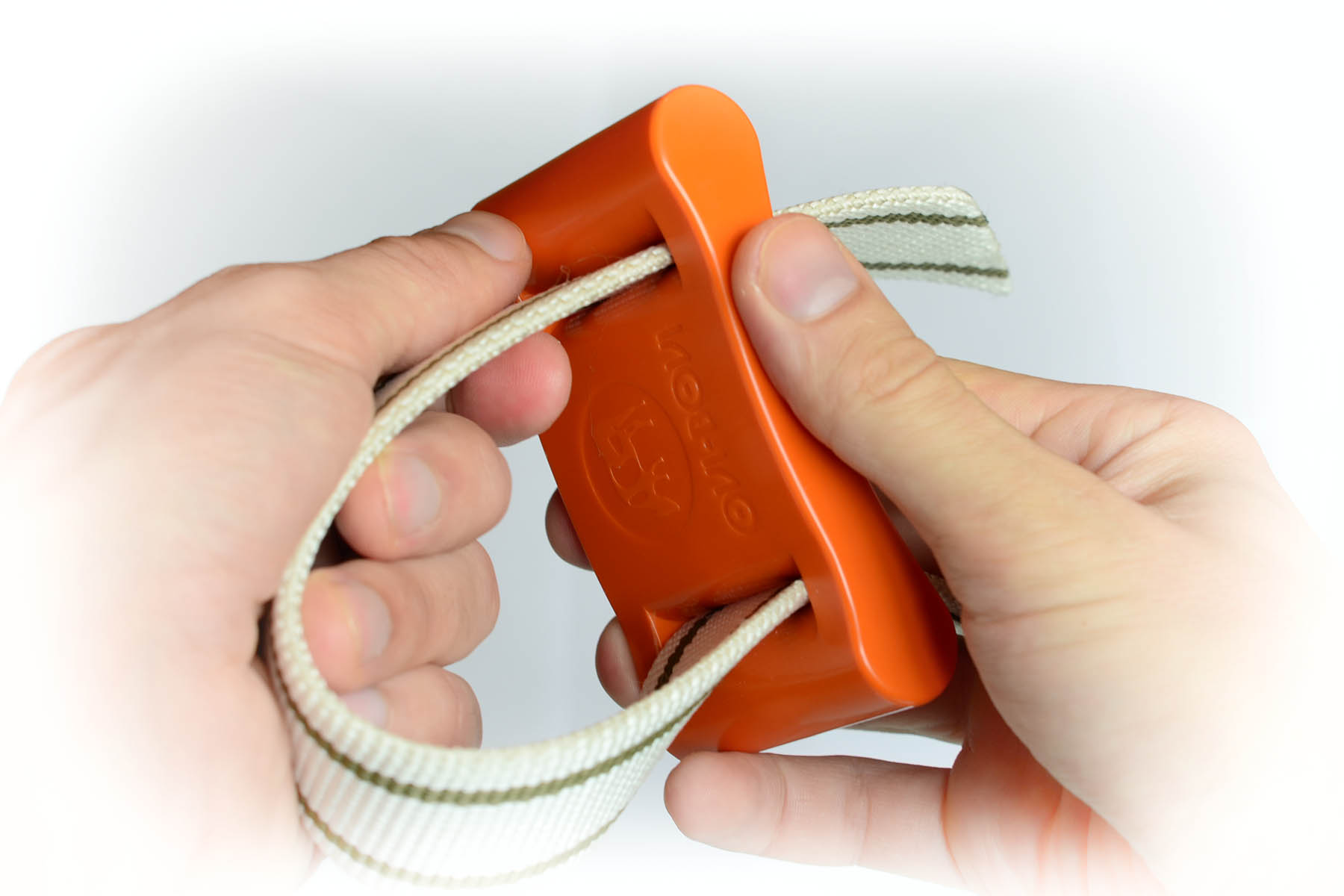
Ovi-bovi tags fit any standard 4 cm wide collar with no need to keep any specific sensor position and orientation. Expected battery life of each tag is over 10 years; if necessary, a tag can be swapped from a cow to another cow anytime, with the new cow ID associated with the tag’s ID in the database. Cow activity data is transmitted by a tag every 20 minutes in ten-minutes chunks over 5+ km from the tags to the receiver (actual range is dependent on receiver antenna elevation, type of terrain and other details; in-the-field measurements are advised before installation if range is critical).
When in heat, a cow shows specific activity which allows to determine estrus event automatically. Once the heat (or abnormal activity drop which can signal cow illness or just a lost collar) is detected by the software, farm staff is alerted via Telegram immediately. Cow in heat as determined by the system appears with its activity plot preview in the Heats section of the Ovi-bovi web app. For example, this screenshot shows four well-developed heats detected 18, 10, 6 and 4 hours ago:
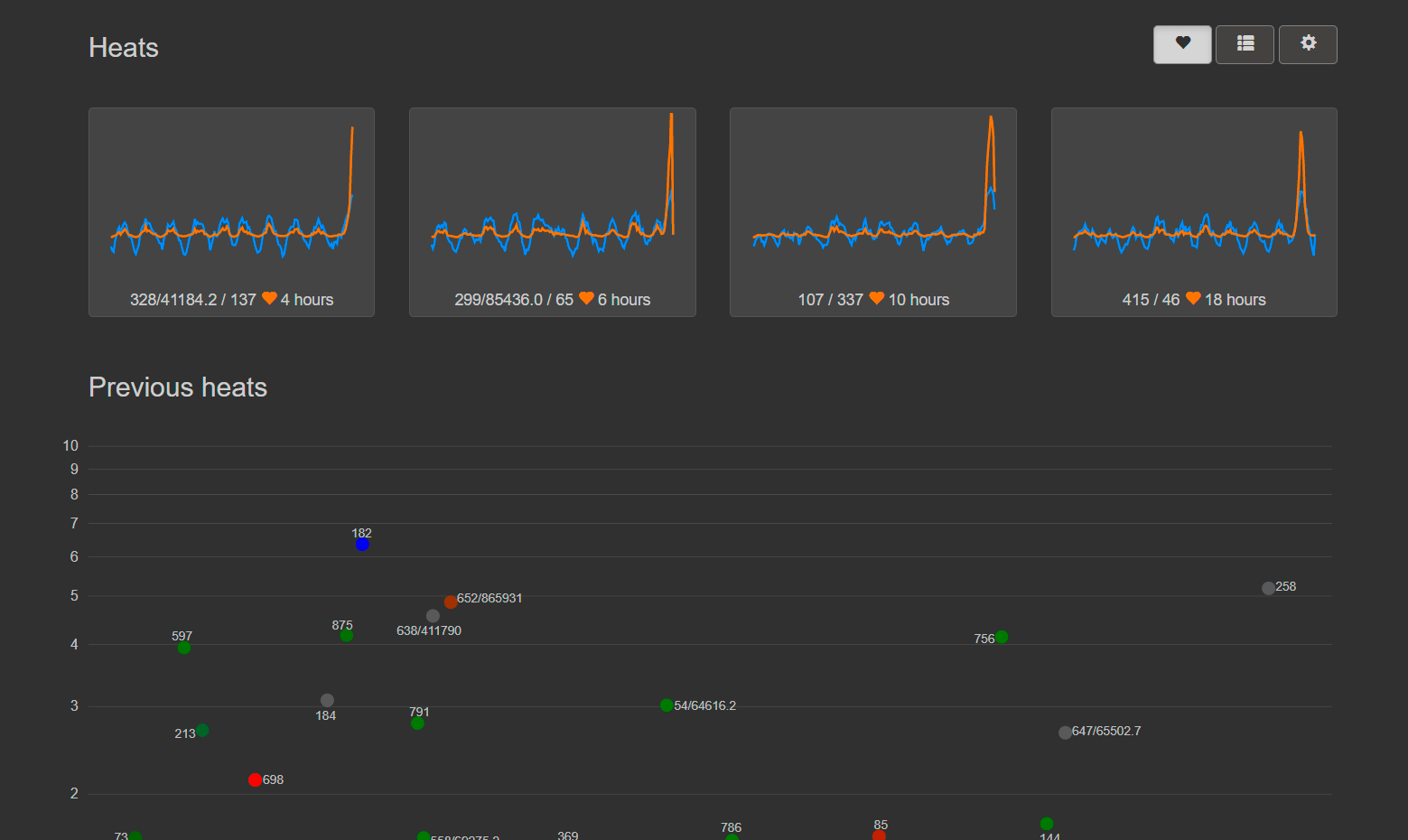
Under activity previews of cows in heat we see previous heats plotted, with each heat strength shown by its dot vertical position, and AI timing relative to heat detection time shown by the dot color.Activity data for each cow with 10-minutes resolution is stored on the server and can be accessed and visualized by a click on that cow in the app. For example, click on cow №328 to see her details:
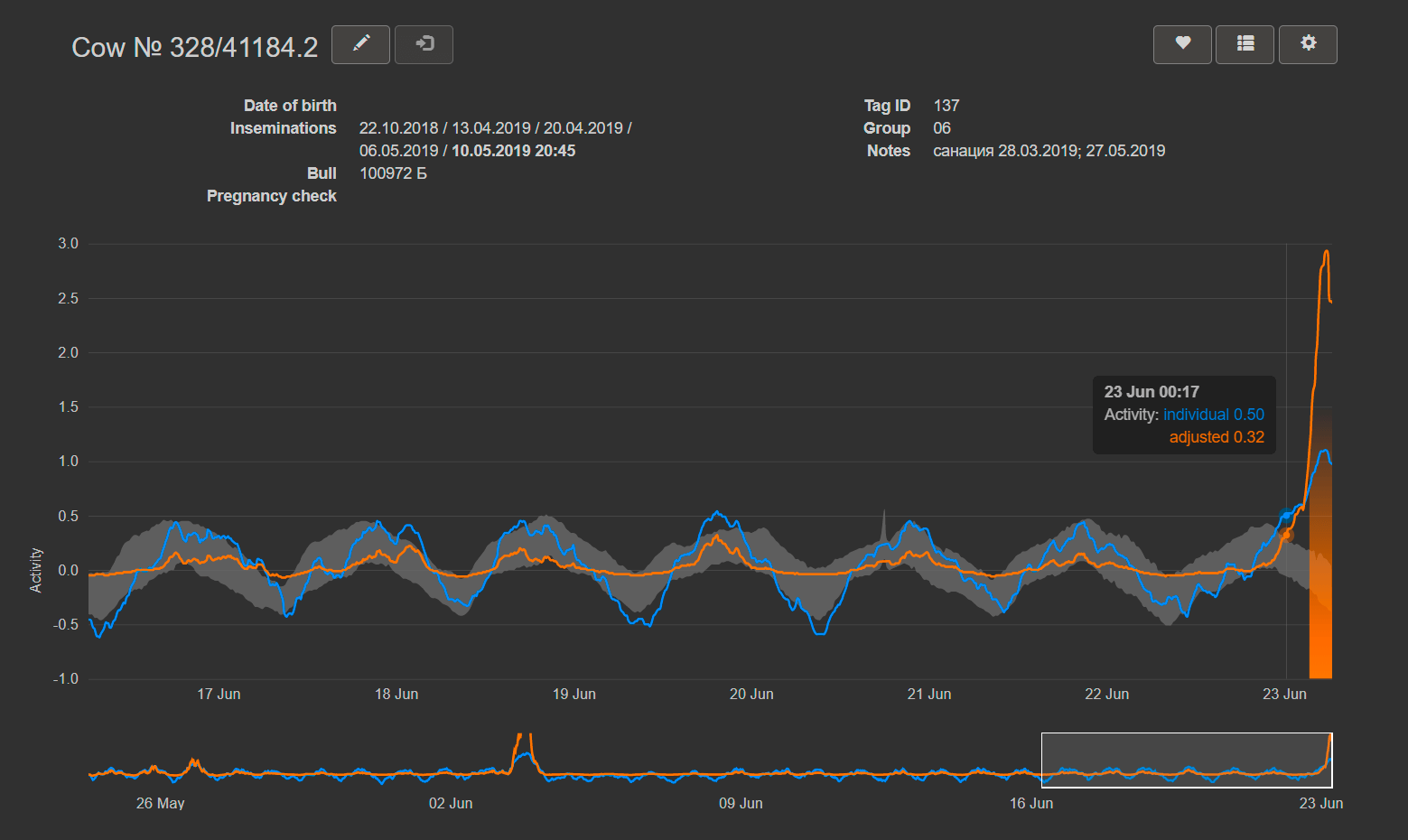
Ovi-bovi system is manufactured according to the registered specification BY 191640612.001-2016 and conforms to the requirements of Eurasian Customs Union technical regulations 020/2011 on electromagnetic compatibility of equipment, declaration № BY/112 11.01. ТР020 003 20945. Upon request our system can be integrated with other accounting and statistics programs into a unified farm management automated system.
In addition to the main longrange radio, Ovi-bovi tags have NFC chips with ISO 15693 (13,56 MHz) radiointerface readable by any device complying to ISO 15693 which you might have on the farm. Upon touching the tag with NFC-enabled smartphone you will have the web-page of the cow linked to that tag being opened automatically. You can also switch tag’s default activity tracking regime to accelerometer raw data logging and back (that’s how researchers at São Paulo studied cattle behaviour in tropical conditions) and do even more tweaks if needed.
Why heat alerts are urgent
Timely notifying inseminator about the onset of a cow’s oestrus is a key to achieving high insemination rate on a farm. Scientific research shows it may take as little as 8 to 16 hours from the onset of cow heat to the moment of her insemination for the best resultsFor extensive discussion with references to most recent studies see J.B. Roelofs, “Estrus detection tools and their applicability in cattle: recent and perspectival situation,” Animal Reproduction 12 (2015) 498–504. In the paper by S.T. Nelson et al., “Automated activity monitoring and visual observation of estrus in a herd of loose housed Hereford cattle: Diagnostic accuracy and time to ovulation,” Theriogenology 87 (2017) 205–211, even tighter schedule is propelled for beef cows: AI should be performed approximately 6 hours after detection of estrus to maximize reproductive performance. Further research on optimal insemination timing is clearly needed.; worse, none of activity tags can detect the onset of heat at that very moment, so even less time is left for insemination from the moment the heat is detected.
One reason for this can be seen from activity plots: in heat, aggregated cow activity rises gradually, so that it takes about 3 hours for the curve to reach activity level of one standard deviation, at which instance the onset of heat can be determined reliably, after passing through the half-threshold of 0.5 std deviation, i.e. after the moment the heat actually started. Furthermore, any type of running-time data aggregation and smoothing (such as calculating the moving means needed to determine heats as spikes over the “normal” activity level) induces phase shift in the smoothed data. This shift depends on the type of averaging (simple or weighted) and roughly equals half the averaging interval: for example, with 10-hours simple averaging the curves lag behind actual activity pattern by 5 hours. Thus up to 8 hours may be needed for accurate and reliable automated detection of estrus after its onset,Attempts to shorten this interval invariably lead to sufficient increase in the number of false-positive heat alerts — a problem encounted with many commercial activity detection systems. so that no more than 8 hours more are left for insemination — given the signal from the tag is obtained immediately.
When designing Ovi-bovi system we made sensors capable of communicating with the receiver on a 24-hour basis, followed by immediate data processing and automated sending of cow heat or health alerts via Telegram bot (preferred way), old-fashioned SMS (not available in some countries) or e-mail to inseminator, veterinarian and other registered users. Automatically and in time — not waiting till cows show up at the parlor to get their tags scanned — you are alerted if a cow is in heat or on low activity.

Technical specifications
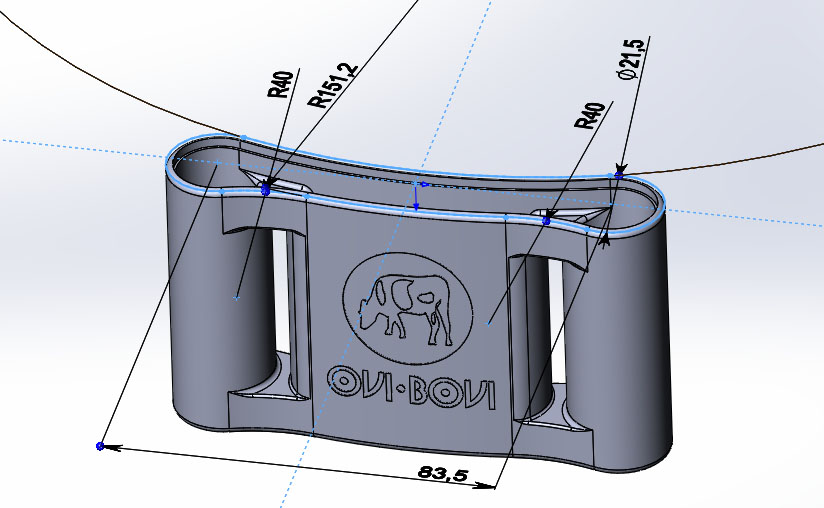
| Tag weight and size | 70 g, 105 mm × 60 mm × 22 mm |
| Radio frequency band | 433.05…434.79 MHz |
| Tag’s peak emitted power | 10 mW |
| Wireless data transfer rate | 2.4 kbps |
| Wireless operating range | 2…5 km |
| Battery life | 10 years |
| Operating temperature | −20…85°С |
| Ingress protection rating | IP67 |
| Number of tags supported | unlimited |
| Tag calibration period | 1 day |